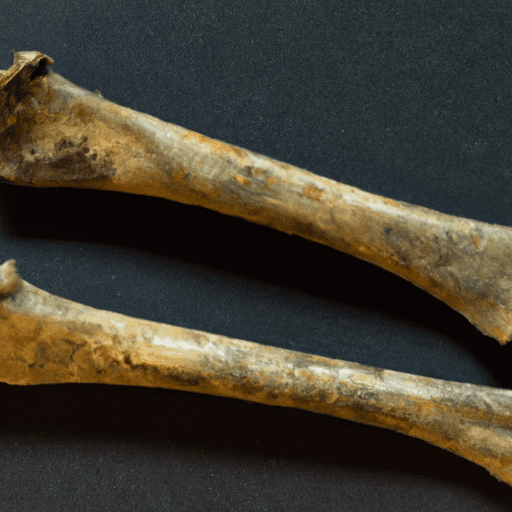Exploring the Delights of Marrow Bone: A Culinary Delicacy
If you’re a food enthusiast with a penchant for the delightful wonders of bone-in meat, then you need to acquaint yourself with the rich and succulent marrow bone. This often overlooked culinary treasure offers a plethora of flavors, textures, and health benefits that will leave your taste buds begging for more. Join us as we delve into the world of marrow bone, exploring its taste profile, various uses in cooking, nutritional value, and uncovering some interesting history and facts along the way.
Taste: A Heavenly Richness
Marrow bone, as its name suggests, is the soft, spongy tissue found inside the hollow inner cores of leg bones, typically from beef or veal. It possesses a beautiful, creamy texture and an intense, savory flavor that embodies the essence of umami. Often described as “meaty butter,” marrow bone delights the palate with its unctuousness and richness, adding depth and complexity to any dish it graces.
Culinary Uses: From Simplicity to Sophistication
This versatile culinary ingredient finds its way into a wide array of dishes, from rustic simplicity to high-end restaurant fare. Here are some common uses that demonstrate its diverse capabilities:
- Marrow Spoons: These specialized utensils allow you to extract the precious marrow from the bone, which can be spread onto crusty bread or used to enrich sauces, gravies, or stews.
- Roasted Delight: Marrow bone, when roasted, undergoes a magnificent transformation. The heat renders the fat, resulting in a creamy, slightly caramelized delight that pairs excellently with roasted meats or can be enjoyed on its own.
- Broths and Stocks: Adding marrow bone to your homemade broths and stocks infuses them with an extra depth of flavor, contributing to a more robust and satisfying end result.
- Gourmet Preparations: Many chefs embrace marrow bone as an elevated ingredient in their culinary creations. You might find it incorporated into risottos, pastas, or even as garnish for luxurious dishes.
The possibilities are truly endless when it comes to utilizing marrow bone in your cooking, allowing you to create dishes that are both comforting and sophisticated.
Nutritional Value: A Hidden Gem
Apart from its delectable taste, marrow bone also offers several nutritional benefits. It is a rich source of healthy fats, particularly monounsaturated fats, which promote heart health and contribute to a balanced diet. Additionally, it contains essential amino acids, vitamins A and K, iron, and zinc, supporting overall well-being and immune function. As with any food, moderation is key, but incorporating marrow bone into your diet can certainly be a satisfying and nourishing choice.
History and Facts: Time for Discovery
Unearthing the history and facts behind marrow bone reveals an interesting journey through time:
- Ancient Origins: The consumption of marrow bone dates back thousands of years and was highly prized by various ancient civilizations for its flavor and nutrition.
- Culinary Traditions: Indigenous cultures have long celebrated the use of marrow bone, incorporating it into traditional dishes that are still enjoyed today.
- Carnivorous Delights: Marrow bone has become an integral part of the nose-to-tail movement, where chefs and food enthusiasts embrace the philosophy of utilizing every part of the animal in their cooking.
Embrace the Delights of Marrow Bone
Marrow bone, with its heavenly taste, culinary versatility, and nutritional value, presents itself as a gourmet ingredient that deserves to be celebrated. Whether you’re creating an indulgent roasted marrow dish or infusing your broths with rich flavors, marrow bone offers a unique experience that will satisfy the cravings of food lovers and add a touch of sophistication to any meal. So why not give it a try? Unleash your culinary creativity and unlock the delightful wonders of marrow bone today.
Marrow Bone
- Origin: Marrow bones come from the long bones of animals, such as beef, veal, or lamb. They are often obtained from the femur or tibia bones.
- Common Uses: Marrow bones are commonly used in cooking to make rich and flavorful broths, stocks, and sauces. The marrow can also be extracted from the bones and used in recipes like sauces, spreads, or as a topping for dishes. Roasted marrow bones are a popular culinary treat.
- Nutritional Benefits: Marrow bones are a good source of nutrients, including vitamins A, D, E, and K, as well as essential fatty acids. They contain minerals like calcium, phosphorus, and magnesium, which are important for bone health. Marrow also contains collagen, gelatin, and amino acids that are beneficial for joint health.
- Unique Properties: Marrow is known for its rich and buttery flavor, often described as “meat butter.” When cooked, the marrow becomes soft and creamy in texture. The bone marrow has a high fat content, which gives it a smooth and velvety mouthfeel.
- Historical Significance: Marrow bones have a long history of culinary use and have been valued for their flavor and nutritional benefits. They have been enjoyed in various cultures throughout history and have been used in traditional dishes like bone marrow soup and roasted marrow bones. In many cultures, consuming marrow has been associated with strength and vitality.




Use the share button below if you liked it.
It makes me smile, when I see it.